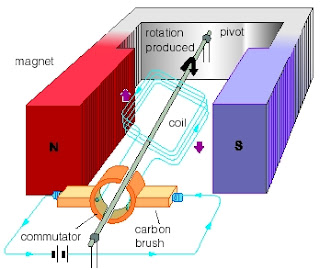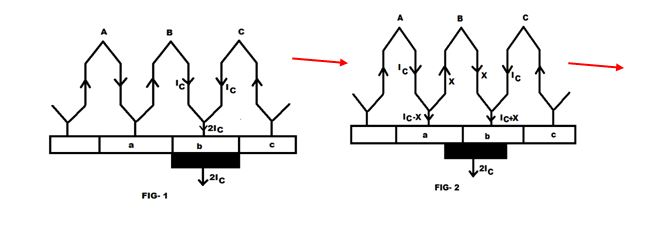
One can be aware of the fact that emf induced into the rotating conductor or winding is always sinusoidal or alternating in nature. If the machine is of DC nature that is DC Generator then it is bounding for someone to convert it (sinusoidal emf) into a unidirectional emf. This process of converting AC voltage into a DC is commonly called as commutation. Hence the commutator is a device which normally acts as a rectifier and performs the process of rectification. Coil(s) current is constant and unidirectional so long as the coil is under the influence of given pole pair(s), while it reverses when the coil passes onto the next pole pair as the armature rotates. Commutation takes place when the coil is passing through the interpolar region and during this period the coil is shorted via the commutator segments by the brushes located (electrically) in the interpolar region. Commutation takes place simultaneously for P coils in a lap wound machines and two coil sets of P/2 coils each in a wave wound machine.
Various symbols used in the figure are:


Various symbols used in the figure are:



At the instant the commutation of the coil begins, the leading tip of the brush makes full contact with the segment x and is just going to make contact with the segment y. At this instant, all coils to the right of segment x carry current Ic flowing from left to right and those on the left current Ic in the opposite direction.
During this period of commutation as the coil passes from right to the left of the brush, the coil current must reverse and the brush should short-circuit the coil via segments x and y. The contact width xc between brush and segment x reduces linearly while the contact width yc between brush and segments y increase. The coil current ic(t) during this period is changing. If at the end of the commutation period, when the trailing tip of the brush is going to break contact with segment x. At the end of commutation period, the coil current has not reversed and acquired full value Ic but as Ic’ < Ic, the breaking of current (Ic-Ic’) at the trailing brush tip takes place causing sparking.
Hence sparking at the brushes which results in poor commutation is due to the inability of the current in the short-circuited coil to reverse completely by the end of the short-circuited period.
Two methods are available for improving commutation:-
Resistance Commutation
In this method, the low resistance copper brushes are replaced by comparatively high resistance carbon brushes.
E.m.f. Commutation
In this method, an arrangement is made to neutralise the reactance voltage by producing a reversing e.m.f. in the short-circuited coil under commutation.